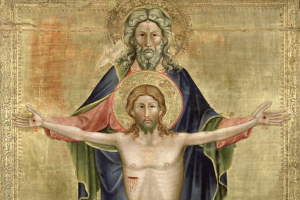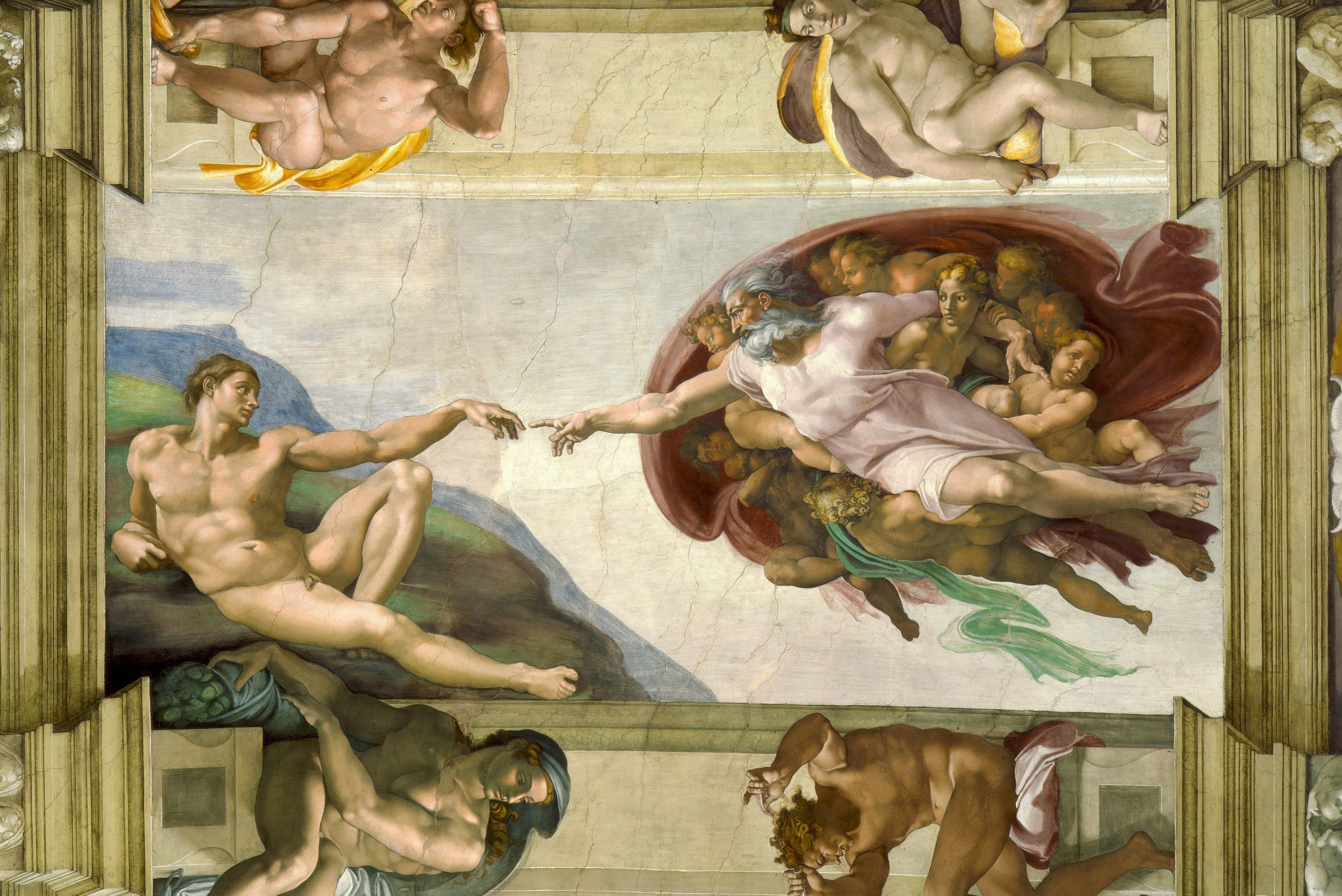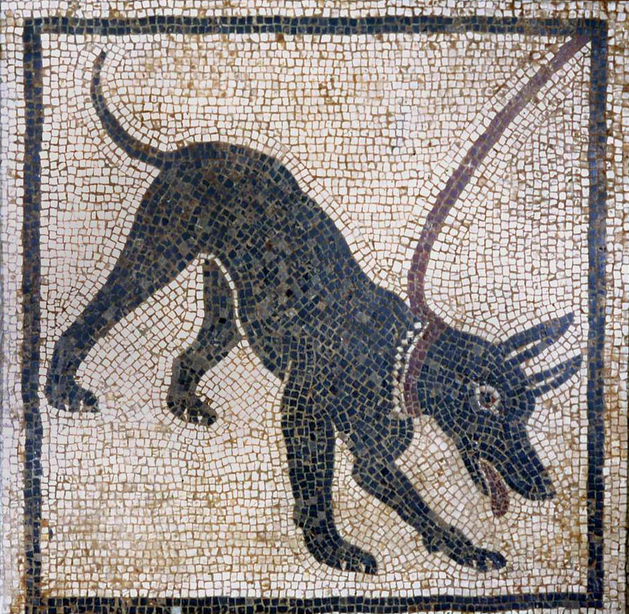Editor’s Note: We are happy to share a fine post that was originally posted at The Imaginative Conservative. They have graciously agreed to allow us to share this great article with our readers. We do encourage you to peruse their site, if you do not already do so. It is full of wonderful articles and insights. This particular article was written by Kenneth Odom. We have chosen to only include the images included on the original here.
Fine art does not set out to entertain. Instead, fine art seeks to summon one to worship, for contemplation of God’s control, authority, and presence is indeed worship…
 Before the world was digitized and messaging was made instant via the ubiquity of supercomputers carried in each person’s pocket or purse, written communication was facilitated by means of mail delivered by the postal service. Specifically, a writer would place his or her message into an envelope and then entrust its delivery to a group of people who never (well, rarely) failed, even in the face of rain, sleet, or snow. The delivery process could be as short as a single night or, in the case of certain international messages, several weeks. When a delivery did finally occur, it happened in one discreet moment. Messages did not trickle in over time, each with individual self-importance. Instead, all messages for the day arrived at once, the mundane and the consequential mixing in the ultimate example of egalitarianism. This combination of delayed gratification, discrete event, and randomness created a sense of adventure in the recipient.
Before the world was digitized and messaging was made instant via the ubiquity of supercomputers carried in each person’s pocket or purse, written communication was facilitated by means of mail delivered by the postal service. Specifically, a writer would place his or her message into an envelope and then entrust its delivery to a group of people who never (well, rarely) failed, even in the face of rain, sleet, or snow. The delivery process could be as short as a single night or, in the case of certain international messages, several weeks. When a delivery did finally occur, it happened in one discreet moment. Messages did not trickle in over time, each with individual self-importance. Instead, all messages for the day arrived at once, the mundane and the consequential mixing in the ultimate example of egalitarianism. This combination of delayed gratification, discrete event, and randomness created a sense of adventure in the recipient.
Slaking that anticipation was a two-part process. The culmination of that process, opening the envelope and reading the message contained therein, was preceded by a step that was no less important and that, in its own way, conveyed essential information that helped to prepare and to organize the mode, the manner, and the mindset of the recipient. This step was, of course, judging the content and import of the message by evaluating the envelope, its receptacle. Indeed, much could be learned from studying the envelope. For example, mail delivered from overseas traveled in a distinctly recognizable white envelope of which borders were adorned with red and blue hash marks. A greeting card typically arrived in a brightly colored, often pastel, sheath. Mail of an official sort, which perhaps included important papers to sign or to retain, was clothed in a larger envelope that may have been marked with the warning that it was not to be bent or that it was official business. The communication of a lover might arrive in a container that had been slightly scented with a favorite, and until then forgotten, perfume. This great diversity in the appearance of media, then, served a number of purposes. The most immediate purpose was, of course, to protect the message both from the elements and from unintended recipients. However, in addition, the various types of envelopes served to provide for the recipient—both the intended and the unintended—an awareness of the message, an initial assessment of its import, a filter by which to determine which messages demanded the most immediate attention, and an excitement to pursue the knowledge that the message contained.
Roger Scruton maintained that, “Works of art stand as the eternal receptacles of intensely intended messages.” Like an envelope, the receptacle that is art, while not the message, serves a number of functions without which the message might be lost, damaged, ignored, or diminished. Art preserves the artist’s message, allowing it to be delivered across great expanses of time and space. Art renders in its observers an awareness that a message exists and then demands that the observer take steps to attend to the message. Art provides a notion of the importance of the message and, in so doing, signals to the recipients the level of care that should be applied in discerning the message. Most of all, art excites a desire in the observer to pursue knowledge about the message.
An obvious, but easily overlooked, point should be raised here. Art serves the message, not the other way around. No matter how excellent the envelope—in color, shape, size, smell, or texture—nobody would presume that the envelope supersedes in importance the message that it contains. Rather, it is the message that determines the nature of the envelope. The message, not the medium, is the critical element in determining the recipient’s response to a piece of mail. Certainly, one could place a trivial or profane message into an official envelope, but that would only serve to mislead the addressee, who would soon discover the truth and discard the envelope and its message in short order.
It is on this point that one can mark the definitive distinction between art and fine art. The difference between the two creative enterprises is neither the medium utilized nor the form taken by the receptacle. Instead, the criterion by which one can discern fine art is the subject matter of the message contained therein and conveyed by the creative exercise. In short, some art conveys the equivalent of junk mail messaging while other art delivers critical information about the human condition. The former may be called art, while the latter is referred to as fine art. Fine art is that art whose message makes one aware of the immortal and whose representation excites in the observer a desire to pursue knowledge of the divine. Where art conveys a message about the temporal, fine art conveys a message about the transcendent.
The mechanism by which art communicates the nature of its message is beauty. It is not the intention of this essay to delve deeply into Kant’s musings about aesthetics, but a summary of his thoughts on beauty is helpful in understanding the relationship of beauty to the message that fine art delivers. Kant defined beauty as the quality of a representation that conveys pleasure through the act of judging. In order to judge a representation, in Kant’s view, one must move beyond the initial sensuous experience and adopt an attitude of thoughtful reflection. This definition finds ready application in discerning art from fine art. Art does not engender the necessary attitude of reflective repose and, thus, is not beautiful, even if it is agreeable. Fine art, on the other hand, meets Kant’s definition of the beautiful.
Unresolved by Kant’s criteria for beauty is commentary concerning what, specifically, about a message makes it beautiful. Kant makes a statement about what beauty is, but he does not provide direction as to how beauty comes to be. The British critic John Ruskin provides an answer to this query by referring the observer back to God. Ruskin maintains that something is beautiful when it reflects God’s attributes. Here, then, is an opportunity to unite the definition of fine art with the definition of beauty. Fine art both conveys a message about the divine and causes the observer to reflect upon the attributes of God. Only fine art may be deemed beautiful because only fine art contains a message about the immortal.
This means that determining whether something is fine art requires an understanding of the attributes of the divine. A discussion of these attributes both yields a set of criteria for discerning art from fine art and reveals the theological basis for fine art. The attributes of the divine are the attributes of God, as revealed in his creation and in his word. Beauty, the defining characteristic of fine art, is that which approximates the attributes of God in material form. So, fine art is art that conveys a message concerning these attributes. The Bible describes God as having moral, relational, spiritual, emotional, and intellectual attributes. The essential unity of God requires that we acknowledge all of these attributes in contemplating him. Thus, art that speaks only to one or two of the attributes of God is not, rightly speaking, fine art. God is identifiable as God because he is moral, relational, spiritual, emotional, and intellectual. Man is said to be made in the image of God because he, alone among creation, is able to approximate all of these attributes. So, fine art cannot deliver only emotional content or intellectual content. Fine art must, like man, be made in the image of God. That is, fine art must represent God by approximating his attributes. Fine art contains a message that forces the observer to reflect upon all of the attributes of God.
It follows that the ability to discern fine art requires that one cultivate an understanding of God’s attributes. This is not to say that fine art will not impact one who is not fully versed in the many attributes of God. Indeed, as Paul reminds us in Romans 1, even those who do not know God are familiar with him because of the works of his creation. That being said, though, the discriminating judge, one who Kant would say has developed taste, is one who can readily recognize and name God’s various characteristics. A brief summary of these attributes provides clarity, then, with respect to the prerequisite messaging that marks a piece of art as being fine art.
God first and foremost exhibits moral excellence, which is commonly described as goodness. This fact is asserted early in God’s revelation to man in that he declared his works of creation to be good and is reinforced throughout Scripture, most notably by Paul who declares that, “And we know that for those who love God all things work together for good, for those who are called according to his purpose” (Rom. 8:28). John Frame explains that the basic, broad concept of good encompasses a fairly large number of specific attributes, including love, grace, patience, faithfulness, mercy, justice, righteousness, and holiness. But it is his essential goodness that gives shape and structure to God’s moral attributes. Frame defines goodness as “conduct. . .that measures up to God’s standards.” Thus, God provides both the standard by which one determines if something is good and a powerful example of someone doing good. God’s goodness manifests itself as “act[ing] to benefit others.” We see these examples of “benevolence” in the blessings that all receive when the sun shines or when the rain falls (“common grace”). But we also see examples of God’s goodness in the grace that he bestows on the elect. As we think about art and, more specifically, the beauty that identifies fine art, the beautiful is that which causes reflection upon or a desire to see others benefit from love, from grace, from patience, from mercy, and from righteousness.
Humanity is made aware of God’s goodness by virtue of God’s continual desire to be in relationship with his creation. Stretching from the beginning of the world, when, Genesis tells us, God would walk with Adam and Eve in the Garden of Eden, to the gift of the Holy Spirit’s daily accompaniment today, Scripture stands as a testimony to God’s loving relationship with man. Not only does God desire to be in relationship with us, but also he desires for us to be in relationships with one another. It is for this reason that God declared that, “It is not good that the man should be alone,” and so created for him a helper. The instruments of God’s goodness—love, grace, patience, and mercy—are best exhibited in the form of our relationships with one another. Art that reveals the depths of these relationships—relationships with God and relationships between human beings—is art that may be deemed beautiful because it causes one to reflect upon the relational attribute of God and the fact that he enables man to mimic that aspect of his character.
We come to know and to relate to God along the lines of two additional sets of attributes. The first set of attributes is emotional. Among the emotions that God displays when interacting with his creation are anger (Deut. 9:22), compassion (Psa. 135:14), grief (Gen. 6:6), love (John 3:16), jealousy (Josh. 24:19), and joy (Isa. 62:5). Similarly, mankind experiences the full range of emotions when interacting with one another and when interacting with God. Unlike God, whose emotions are contained within the context of his will and do not change either his will or his character, man struggles to contain his emotions such that, sometimes, it seems prudent to deny their existence. However, this would be a mistake. Wagner, in Opera and Drama, rightly highlights the revelatory role that emotions—feelings—play in leading to understanding. This reality is why the emotional attributes of God are, perhaps, the easiest for us to identify in art. Importantly, though, art that appeals only to the emotions can never be deemed either beautiful or fine. The mistake of much art is to assume that it can do anything more than entertain when it references only one of God’s attributes in isolation from the others that define his character.
The most frequently neglected attribute of God, especially amongst modern evangelical Christians, is his intellectual attribute. However, God commands us to know him with heart, with body, and with mind. One reason for this neglect may be that knowing God’s intellectual attributes is hard work. It is so rigorous, in fact, that God indicates that it is not possible without the renewal of our minds (Rom. 12:2). Even then, one cannot truly know God without his help. Paul indicates as much to the Ephesians when he tells them that he prays, “that the God of our Lord Jesus Christ, the Father of glory, may give you the Spirit of wisdom and of revelation in the knowledge of him” (Eph. 1:17). With respect to the beautiful, then, one must be challenged intellectually in addition to being stimulated emotionally. As Kant contends, one cannot say anything more than whether something is agreeable unless it excites intellectual contemplation. This truth echoes the reality of knowing God. One may experience God emotionally, but one may not know God unless that emotion is united with the intellect.
When one considers God’s morality, as expressed to us in relationship via emotions and intellect, one cannot help but confront God’s spiritual nature. Specifically, God’s spiritual attributes are manifested in what John Frame calls his “lordship.” As Frame relates, God has control, authority, and presence. Frame writes,
If God controls all things, then his commands are authoritative, and his presence inescapable. If his commands are supremely authoritative, then God can command all things, thereby exercising control, and since we cannot escape from his authority, he is necessarily present to us. Further, God’s presence is a presence of divine control and authority. So it is not as if God could be divided between three parts…. Rather, each of the lordship attributes describes God as a whole. . .
Ultimately, then, fine art—art that is truly beautiful—is art that brings man face to face with God’s lordship—with his presence, with his authority, and with his control. One cannot arrive at that place without contemplating God in all of his myriad characteristics. Thus, fine art is art that causes one to consider the moral good manifested in relationship with the divine and with each other through the lenses of emotions and understanding. Such consideration necessarily says something about God’s control, authority, and presence in the lives of his creation.
This understanding of fine art allows one to firmly describe its purpose. Fine art does not set out to entertain. Instead, fine art seeks to summon one to worship, for contemplation of God’s control, authority, and presence is indeed worship. Incidentally, it is here that a good number of modern churches might find a much-needed corrective. Many modern churches seek to entertain, using art (like music) in such a way that it hints at one or two of God’s attributes but never all of them. Such art, though, fails to incite the necessary attitude of contemplation of God’s spiritual attributes. A healthy dose of fine art, as identified by that which is, truly, beautiful, might yield a true harvest.
It is a truly remarkable realization that God, the creator and controller of the universe, seeks to communicate with his creation. As Hegel would note, one avenue for this communication is the creative expression of man. When man creates art, he is creating a receptacle, an envelope, by which to deliver a message. When the message contained therein is a message from God, about God, the nature of the receptacle must, necessarily, be of sufficient quality to adequately protect and convey such a life-giving missive. Fine art encompasses the receptacles that are worthy of housing God’s messages. When we are confronted by fine art, truly moved by it, then God’s message has been fully delivered.










4.5
[…] Source link […]
5